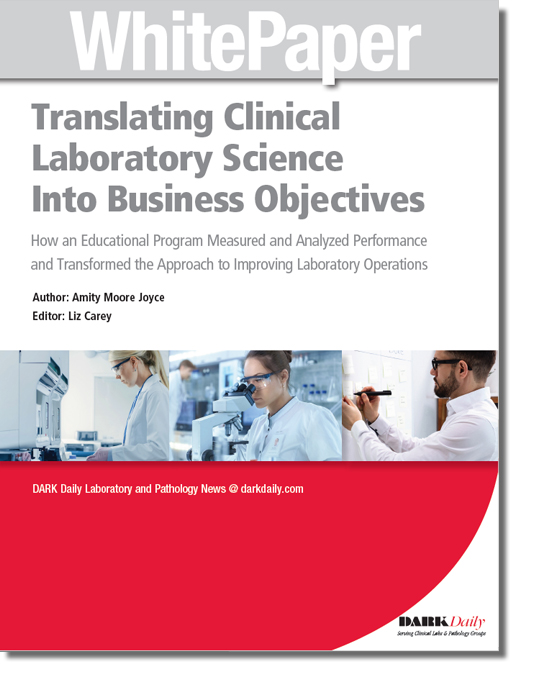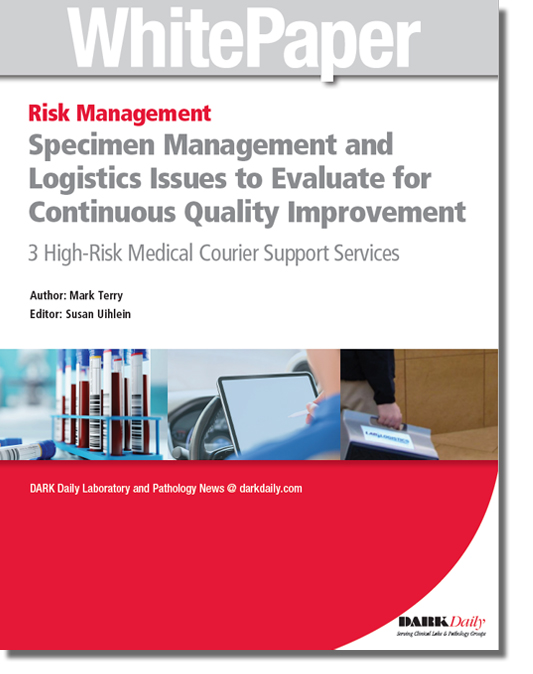
2021 Forecast
Clinical Laboratories Use Automation to Expand Their Data Capabilities and Strengthen Their Resilience to Respond Faster During a Pandemic and Beyond
Clinical laboratories have been significantly stressed by the ongoing coronavirus pandemic. When COVID-19 treatments appropriated slots previously reserved for elective surgeries, procedures, and routine tests, labs lost revenue and turnaround times were lengthened.
Additionally, labs found the technology for running COVID-19 tests as well as administering the necessary documentation was lacking efficiency. Pressures have been compounded by demand from federal and state authorities for compliance with new COVID-related data reporting requirements— a process for which automation has been underused. In fact, most technology currently in place was not built for this new type of workflow, with the predominance of lab systems based on a patient encounter. COVID-19 testing frequently falls outside of these parameters.
Fortunately, since the pandemic began, lessons have been learned. Clinical laboratories have pivoted and adapted— and yet the question remains as to how far into the future labs will need to offer COVID-19 tests on a large scale, with some predictions stretching deep into 2021 and beyond.
As a result, because of urgent needs related to the pandemic, clinical labs are presented with a unique opportunity to strengthen their resilience, redefine their role and offerings, and further extend their value by enhancing patient safety and quality of care.
However, to accurately report on infection patterns and to track and predict infectious diseases—actionable data is a must, along with data structuring to support infection and treatment protocols. Progress in these areas depends on clean, reliable data. Clinical laboratory data that is originated efficiently and accurately using automation to collect, process, and report adds value, reduces costs, and improves patient outcomes.
To address labs’ dire need for clean and reliable data, Dark Daily is pleased to offer this new FREE white paper for laboratory professionals that explains the key steps—and positive results—of strengthening the data service infrastructure of your clinical lab.
This FREE White Paper will provide insights on:
- Why the pandemic disruption carries an unprecedented opportunity, and underscores the imperative to strengthen the healthcare data service infrastructure
- Understand how manual processing of data negatively impacts your lab and not only results in data incongruity, but also affects your practitioner relationships, patient care, and getting reimbursed in a timely manner
- Learn the 3 crucial steps for improving the flow of your clinical laboratory’s data collection, capture, and reporting
- How to ensure your lab’s data management can keep pace with innovation and ongoing new standards for infectious disease and public health reporting, and much more
White Paper Table of Contents
Introduction
Part 1: Strengthening the Clinical Laboratory Data Service Infrastructure
Part 2: Key Steps for Realizing Accuracy, Expanded Capacity, and Reporting of Clinical Laboratory Data
Improve the Data Collection Process of Clinical Laboratories by Reducing Manual Inputs: Three Primary Tasks
Ensure Clinical Laboratory Clean Order Entry: Best Practices
Implement Automation to Strengthen Clinical Laboratory Data Quality, Data Veracity, and Resilience: What to Expect on an Enterprise Level
Organize and Filter Clinical Laboratory Data for Internal, Vertical, and External Integration: Three Truths That Become Evident
Conclusion
Although the healthcare system and clinical laboratories remain significantly stressed by the COVID-19 pandemic, flexibilities and solutions continue to develop. 2021 indicates a sea change in healthcare data collection, integration, and interoperability.
Indeed, healthcare providers are in a unique position, with clinical laboratories the developers, custodians, and distributors of volumes of data that offer opportunities for improving healthcare outcomes, making it incumbent upon lab leaders and their hospital and health system stakeholders to think more strategically.
Learn what you need to know to develop a unified data organization, interoperability, and reporting plan for your lab that leverages accurate, actionable data. Download your FREE copy of “Clinical Laboratories Use Automation to Expand Their Data Capabilities And Strengthen Their Resilience to Respond Faster During a Pandemic and Beyond” below!
Produced in partnership with:

Download the White Paper now by completing the form below.
Access to some white papers may require registration. In exchange for providing this free content, we may share your information with the companies whose content you choose to view. By accessing the white paper, you’re agreeing to our Terms of Service and Privacy Policy.











 e, clinical labs are under pressure to operate efficiently, accurately, and timely, all while still making money. Doctors and patients have come to expect a 24-hour turnaround for most tests. Clinical labs throughout the United States have been slashing budgets, many literally to the point of no return. At least 13 public health labs in four states have shuttered since 2003, which posed a serious problem when COVID-19 hit because resources did not meet demand.
e, clinical labs are under pressure to operate efficiently, accurately, and timely, all while still making money. Doctors and patients have come to expect a 24-hour turnaround for most tests. Clinical labs throughout the United States have been slashing budgets, many literally to the point of no return. At least 13 public health labs in four states have shuttered since 2003, which posed a serious problem when COVID-19 hit because resources did not meet demand.




